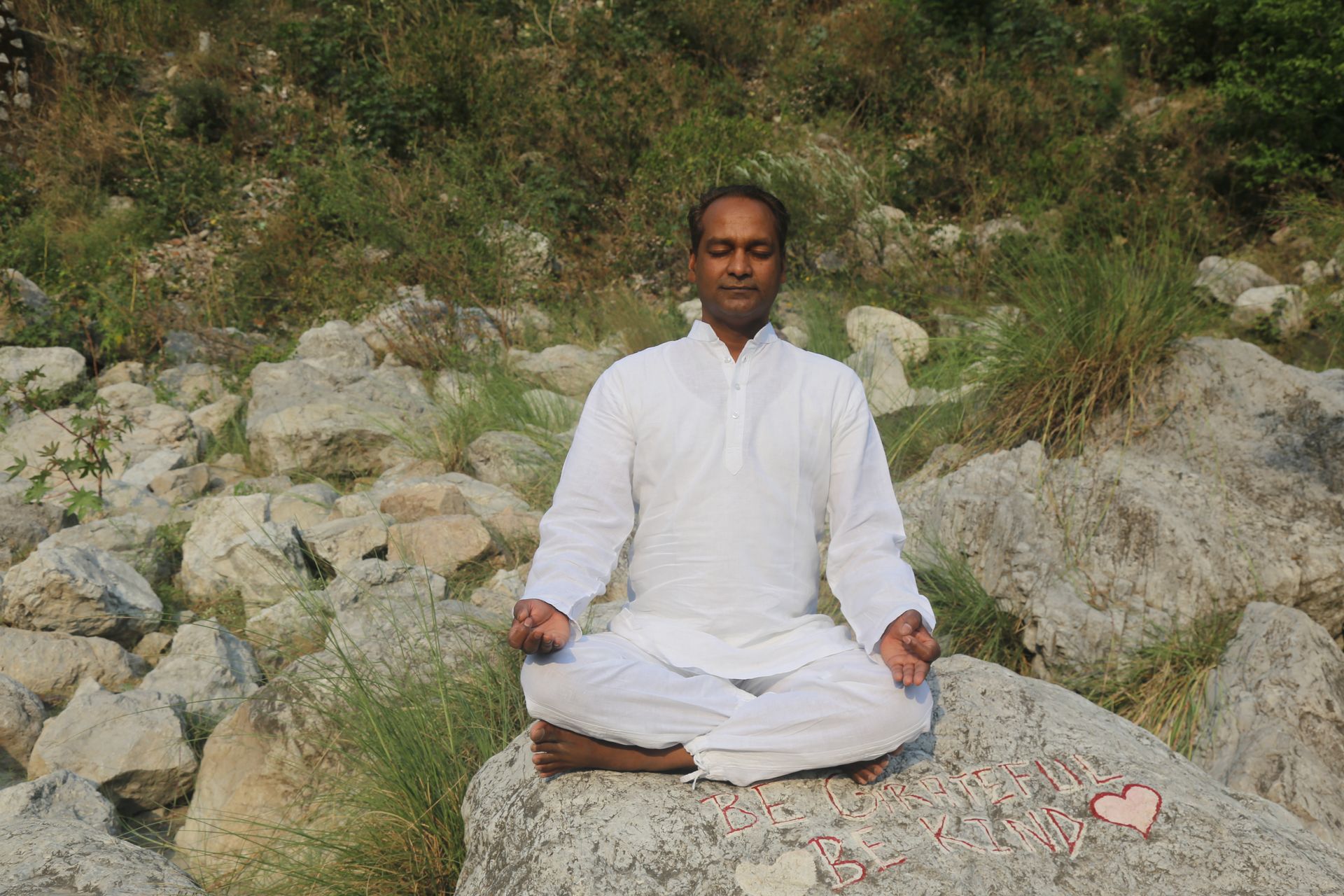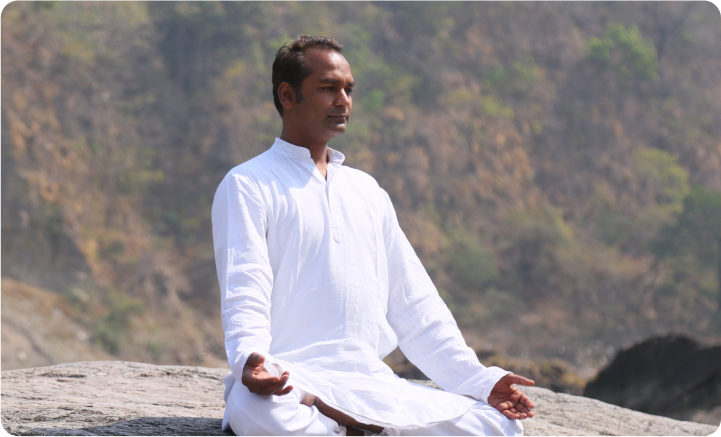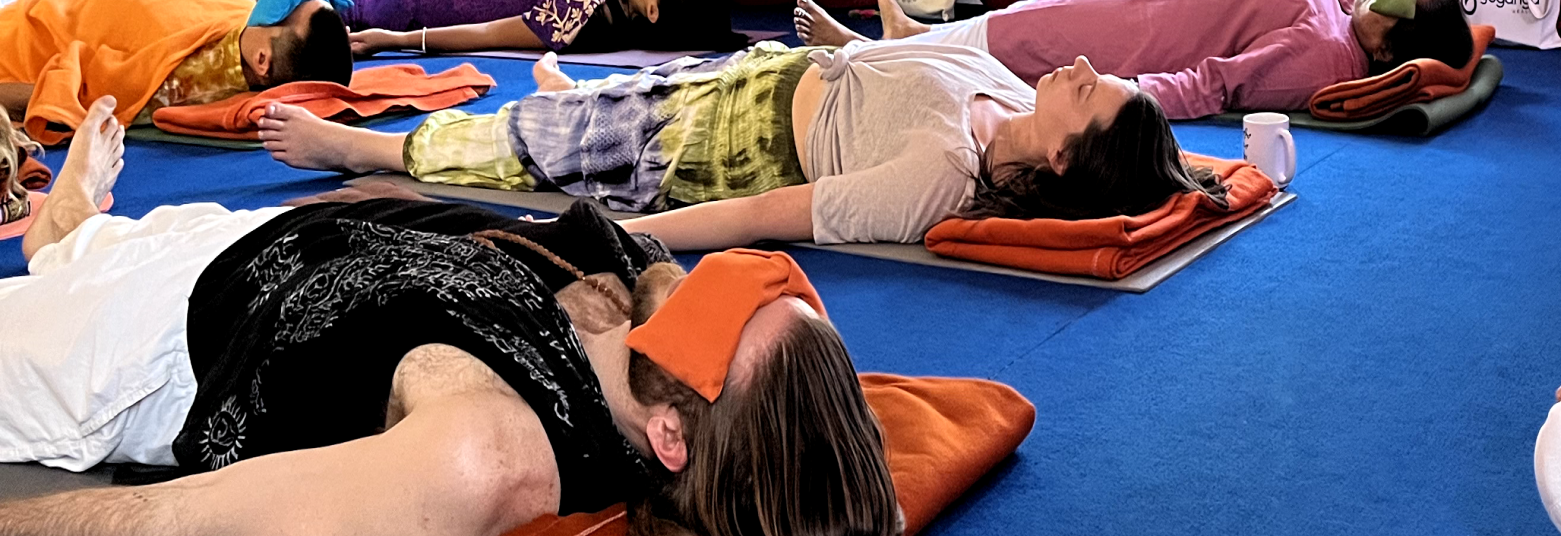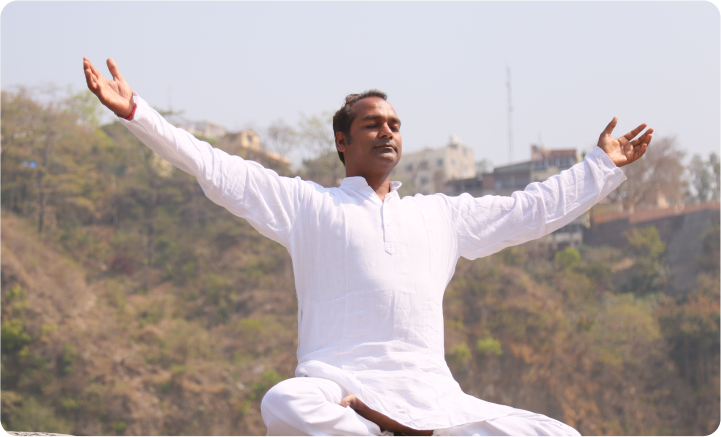Kleshas and Vrittis in Yoga: Understanding the Roots of Suffering
Sunil Sharma • July 11, 2025
In the practice of yoga, many people begin with asanas (postures) or pranayama (breathing techniques). But beyond the physical, Yoga is a complete science of inner transformation. The Yoga Sutras of Patanjali, a foundational text of classical yoga, gives us clear guidance on how to free ourselves from suffering. Two core concepts in this journey are Kleshas (afflictions) and Vrittis (mental patterns or fluctuations). Understanding these two helps us uncover why we repeat emotional patterns, feel inner resistance, and experience suffering. More importantly, Patanjali offers a clear path to overcome them through Kriya Yoga — the yoga of action and purification. This blog breaks down these ideas in simple language so you can reflect, relate, and apply them in your own healing journey.
Vrittis – The Repetitive Movements of the Mind
Patanjali begins the Yoga Sutras with a powerful statement: “Yogaḥ citta-vṛtti-nirodhaḥ”
Yoga is the cessation of the fluctuations of the mind.The Sanskrit word vritti comes from the root vrit, which means “to turn” or “to circle.” Vrittis are the constant turning thoughts, emotions, desires, and memories that cycle within us. They are like waves on a lake—if the water is disturbed, we can’t see clearly. Similarly, when our mind is filled with vrittis, we cannot see our true Self. Patanjali likens the mind to a mirror. When vrittis cloud the mirror, we lose the ability to reflect our real nature. These vrittis often originate from the unconscious mind — patterns carried over from past experiences or even previous lives (samskaras). Because they are repetitive, they feel automatic and difficult to escape.
Kleshas – The Root Cause of Suffering
In Chapter 2 of the Yoga Sutras, Patanjali introduces Kleshas — deep-rooted afflictions that fuel the vrittis. The names of five kleshas:
- Avidya – Ignorance or misperception
- Asmita – Egoism or false identity
- Raga – Attachment or craving
- Dvesa – Aversion or repulsion
- Abhinivesa – Fear of death or clinging to life
These kleshas are not just philosophical ideas; they are embedded in our physical, emotional, and mental makeup. They operate at a subtle level, influencing how we think, act, and react — often without our awareness.
Patanjali says: “Samādhi-bhāvanārthaḥ kleśa-tanūkaraṇārthaś ca”.Kriya Yoga is practiced to cultivate inner stillness and to weaken the kleshas.
Avidya: The Field Where All Kleshas Grow
Patanjali emphasizes that Avidya, or ignorance, is the root cause of the other four kleshas. It is not ignorance in the academic sense, but a misperception of reality.According to the Yoga Sutras, Avidya includes: Seeing the impermanent as permanent,Seeing the impure as pure, Seeing pain as pleasure,Seeing the non-Self as the Self. This misperception influences our decisions, relationships, and reactions. For example, we may cling to a relationship thinking it brings happiness, while in reality it triggers suffering due to dependency or fear of loss.
Kriya Yoga: The Path to Healing
To overcome the kleshas and still the vrittis, Patanjali presents Kriya Yoga, a practical and accessible path for all seekers.Kriya Yoga consists of three components:
- Tapas – Austerity or disciplined effort
- Svadhyaya – Self-study or study of sacred texts
- Isvara Praṇidhana – Surrender to a higher consciousness
Each of these components addresses the kleshas directly:
Tapas: Tapas means disciplined effort, not punishment. It’s about training the senses and mind gently but consistently. One of the most effective forms of tapas is Pranayama (breathwork), referred to in yogic texts as: “Prāṇāyāmaḥ paramam tapaḥ” – Breath control is the highest form of tapas.When we regulate our breath, we bring heat, energy, and awareness to the body and mind, cleansing both.
Svadhyaya: This is both the study of scriptures and the observation of self. Through svadhyaya, we notice our patterns, triggers, and unconscious reactions. We become aware of the vrittis and can begin to work with them consciously.
Isvara Praṇidhana: This is the practice of surrender — letting go of the ego’s control and trusting in a higher intelligence or divine order. It softens the klesha of Asmitā (ego) and helps us stay connected to a deeper inner stillness.
The Four States of Kleshas
Kleshas do not always show up in the same way. Patanjali says they exist in four stages:
- Dormant (prasupta) – Hidden, not active
- Attenuated (tanu) – Present but weak
- Interrupted (vicchinna) – Active only in certain moments
- Fully Active (udara) – Dominating thought and behavior
Yoga practice aims to weaken the kleshas gradually. When they are fully active, it’s hard to listen or reflect. But as they become diluted, we gain the space to make conscious choices.
Practical Examples from Yogic Life
Let’s look at how yogic practices help reduce kleshas:
- Cleansing Kriyas like Jala Neti (nasal cleansing) show us the reality of impurity in the body, helping reduce Avidya.
- Fasting (Upavāsa) done with awareness is not about deprivation but about conserving sensory energy and turning inward.
- Silence (Mauna) works like a fast for speech. When we stop output, we can observe our inner patterns more clearly.
- Meditation becomes more effective when the kleshas are diluted. If we sit to meditate while in a state of anger or strong attachment, it’s difficult to access stillness.
The Ultimate Aim: Clarity and Liberation
As long as the kleshas are strong, higher practices like dhyana (meditation) and samadhi (absorption) are difficult. Yoga, then, begins with reducing the power of afflictions. Ultimately, the journey of yoga is one of involution — going inward to return to the Self. Through consistent practice, the kleshas are reduced, the vrittis stilled, and our perception becomes clearer. We stop seeing through the lens of fear, attachment, or ego. Instead, we see reality as it is — pure, peaceful, and impermanent.This is the space of healing, wisdom, and freedom.
Watch: Detox or Obsession? Real Yogic Fasting (Upavasa) Explained
These days, the word detox is used a lot — in yoga classes, diets, and health products. But is this the same as yogic fasting? In this short 3-minute clip from our Yoganga Healing Circle, Sunil ji explains the real meaning of Upavāsa (fasting) in yoga.
Yogic fasting is not just about skipping meals or losing weight. It’s about turning your senses inward — reducing the energy we usually spend on seeing, hearing, talking, and eating. This is what brings real purification.
If we fast with awareness, it helps us go inward, calm the mind, and reduce the vrittis (mental patterns). This is very different from modern detox trends, which can sometimes lead to more imbalance.
👉 Watch the video to understand the true purpose of fasting in yoga — and how it supports inner healing.
Conclusion
Kleshas and vrittis are not abstract concepts. They are real, living patterns within each of us that influence how we experience life. Through the compassionate and systematic approach of Kriya Yoga, we can begin to see clearly, act wisely, and live freely. As Patanjali reminds us, yoga is not just a path to stretch the body — it is a path to heal the mind, refine perception, and awaken to our true nature.
FAQ's
1. What is the difference between Kleshas and Vrittis?
Vrittis are mental fluctuations — thoughts, emotions, and impressions that move in cycles. Kleshas are deep-rooted afflictions like ego, ignorance, and attachment that fuel the vrittis.
2. Can we remove the Kleshas completely?
Patanjali suggests that while we may not remove them entirely in this physical life, we can dilute their intensity through sincere practice. With weakened kleshas, inner clarity and freedom are possible.
3. How does Pranayama help with Kleshas?
Pranayama (breath regulation) builds internal heat (tapas), purifies the energy channels, calms the nervous system, and brings clarity to the mind, making it easier to observe and dissolve afflictions.
4. Is ignorance (Avidya) the same as being uneducated?
No. Avidya is not academic ignorance. It means misperceiving reality — for example, thinking something temporary will give lasting happiness.
5. What if my kleshas come back again and again?
That’s natural. Kleshas are repetitive. Yoga is a lifelong process of becoming aware, softening their grip, and making conscious choices. With time, the mind becomes more stable and less reactive.
6. Do I need to believe in reincarnation to understand Samskaras or Kleshas?
Not necessarily. Even within one lifetime, we can observe repetitive patterns of behavior (samskaras) formed by past experiences. Whether from past lives or this life, yoga helps us break these cycles.
New Paragraph
Discover More Articles




Ready to Begin Your Healing Journey?
Discover Peace—Spaces Fill Quickly, So Reserve Today


